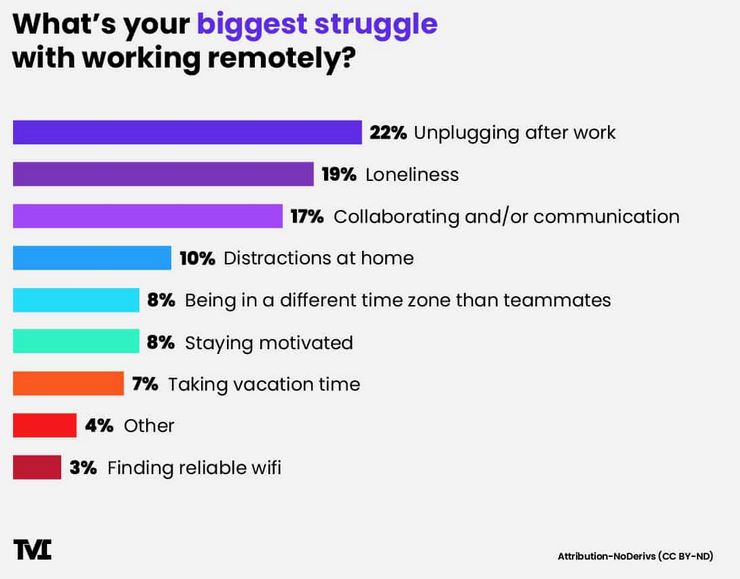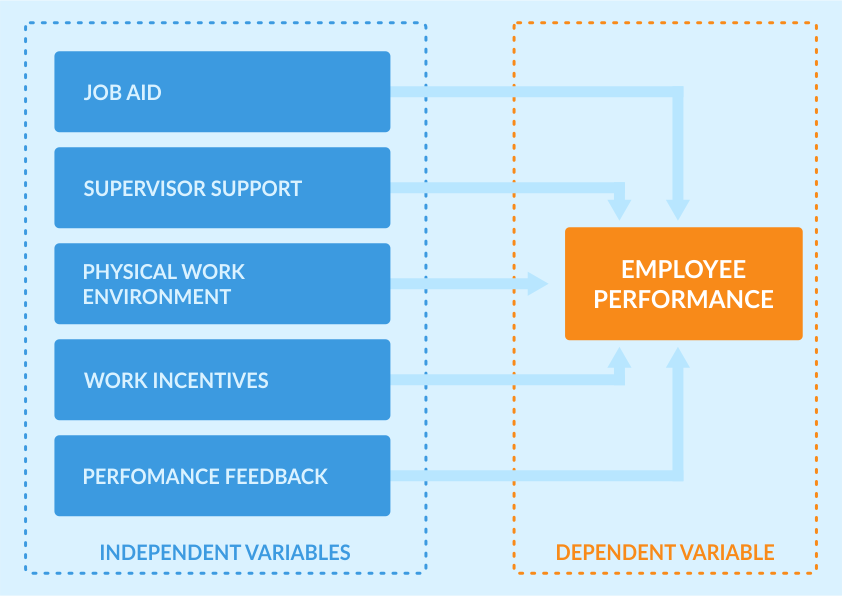There is a proven link between employee engagement in the workplace and employee retention. According to a study by the Corporate Leadership Council, highly engaged staff members are 87% less likely to leave their company. The same study found that the 100 best places to work (where employee engagement is highest) had an average voluntary turnover rate of only 13%. This is far lower than the 28.5% average turnover rate. Therefore, it’s in your best interest to keep your remote workers engaged by giving them a positive workplace and employee experience.

Remote teams have become the norm thanks to the ongoing COVID-19 pandemic, and many companies have indicated that they will continue remote working even once the threat is over. Fortunately, technology makes this possible. You can run meetings through Microsoft Teams and track hours through a digital employee timesheet. But how do you enhance the employee experience when you don’t see your team in the office every day? In this article, we’ll look at a few strategies.
Encourage “Water Coolers”
Remote workers are more prone to burnout than office workers. This is partly because working alone at home can be isolating. Around 19% of workers said that loneliness was their biggest struggle when working remotely:

Therefore, it’s essential to foster friendly and supportive relationships between colleagues, even with miles between them. Social media and messaging apps now allow people to nurture relationships no matter where they’re located.
Make an effort to create an environment that fosters virtual “water cooler” conversations. Since we started working remotely in March, my team has had a dedicated “Social” space in our Slack channel. You can use Slack, WhatsApp, or Microsoft Teams to create something similar. If you want to go a step further, organize some virtual team-building activities.
Improve Virtual Workplace Conditions
Poor working conditions are one of the most significant sources of work-based stress. They also have a direct impact on performance:

You have limited control over your employees’ physical environment when you’re managing a remote team. What you can do is help ensure they have what they need to work effectively and comfortably. This might mean providing a more ergonomic mouse or a better desk chair. It might also mean being flexible with things like working hours so that they can work when their home office is not too hot, or their partner is on childcare duty.
Don’t underestimate the importance of the virtual working environment, which you have control over. Even small changes such as color schemes in virtual workspaces can have a significant impact. Blue is known to have a calming effect, while red induces stress.
Small Business recommends avoiding the following in your online workspace:
- Stripes and bold geometric designs
- Pure white, which can create glare, causing eye strain and headaches
- Dark colors
Music is also a useful stress management tool. Encourage your employees to use music that helps them feel calm and focused. In addition, create a team playlist using Spotify or YouTube. This has the secondary benefit of helping your team to bond and get to know each other better through sharing their musical tastes.
Organize Team Workouts (and Other Ways to Encourage a Healthy Lifestyle)
If the words “team workout” sound like the Ninth Circle of Hell to you, hear me out!
Remote workers often spend hours in front of a computer, and a sedentary lifestyle can take a toll on their health. According to the Huffington Post, based on a Milken Institute study, unhealthy workers cost companies more than $1.1 trillion in lost productivity.
Encourage your remote workers to take the time to keep fit and healthy. One way to do this is to host short virtual team workouts. These only need to be about 15 minutes long, and no-one needs to have their camera on if they’re self-conscious.
A word of warning: these activities must be optional. You want them to be a fun activity, not a dreaded obligation. Mandating participation in specific physical activity also risks excluding people who have health issues and disabilities.
Encourage your employees to take their full lunch break every day and get outside for some fresh air and exercise, even if it’s just a short walk. Employees who live close to each other can also meet up for walks while adhering to social distancing measures. Once gyms start reopening, offer discounted membership as an employee perk.
Facilitating a healthy lifestyle not only improves employee morale but also boosts your company’s reputation. According to Forbes, 89% of workers whose employers offer wellness initiatives are likely to recommend their company as a good place to work.
Say Thank You and Show Your Appreciation
Employee appreciation is directly tied to job satisfaction, employee morale, and workplace happiness. By recognizing your team members for their hard work, you boost their motivation, increase engagement, foster loyalty, and even increase productivity.
Sometimes recognition can be as simple as saying, “Thank you, you did a great job on that project!” Get into the habit of thanking your employees for their work. When you have a check-in call, take time to tell the person what they’ve done well recently. Be as specific as possible.
If you’re stuck for ideas on how to thank your remote employees, consider these options:
- Give them a pay raise.
- Give them non-monetary benefits, such as additional paid time off.
- Praise them publicly in front of others, such as at an all-team meeting.
- Send a small gift, such as a gift card for their favorite coffee shop.
- Involve them in decision-making. This demonstrates that you trust them and value their expertise.
- Offer them opportunities for advancement and career development. You might give them more prestigious and exciting projects to work on, arrange shadowing or mentorship opportunities, or even put them forward for promotion.
The best way to know what someone wants is to ask them. Don’t be afraid to ask your employees what would be meaningful to them and make them feel appreciated. If you cannot give precisely what they ask for—perhaps due to budgetary or time constraints—think outside the box to provide an alternative that still expresses your appreciation.
Foster a Sense of Belonging at Work
Belonging is a feeling of security, support, acceptance, and inclusion. According to Harvard Business Review, a sense of belonging is linked to a 56% increase in job performance, a 50% reduction in turnover risk, and a 75% reduction in sick days. In a company of 10,000 people, this amounts to annual savings of over $52 million!
It’s still possible to foster a sense of belonging even when employees are geographically dispersed if you plan correctly. Communicate your company vision and develop an understanding of how each of your employees can fit into that vision. The most important thing is to communicate that everyone is part of a cohesive group and working towards a common goal.
Establishing mentoring initiatives is a great way to increase the feeling of belonging. Pairing newer or more junior employees with experienced team members helps them to learn more about the company’s vision and values, become more invested in its mission and develop a sense of pride in their part in it.
You should also ensure that everyone has the opportunity for their voice to be heard. Make a point of asking your employees what they think and feel and listening to their answers.
Strategize Together
Open discussion of the company’s goals and strategies enhances the employee experience for your remote workers. Remote employees often feel disconnected from their team and the wider company. By involving them at every stage, you ensure they understand the vital role they play.
People feel more invested in things they had a hand in creating, so ask your remote employees for their input on projects and strategic decisions. This shows that you see them as no less important than onsite employees and value their skills and experience.
Host online collaborative meetings, both one-on-one and with the whole team. You can even do a team strategy day using Zoom, which allows you to hold a large group meeting with virtual breakout rooms. Put your employees into small groups, send them off to have a discussion, then have them feed their ideas back to everyone else.
Creating the Best Remote Employee Experience
You need to keep your remote workers engaged if you want to retain them and ensure maximum productivity. Fortunately, as we’ve seen, you have many ways to deliver a great employee experience, whether your employees are in the same town or on another continent.
So be creative, think outside the box, and ask employees what would help them feel satisfied and appreciated.
Finally, try to put yourself in your remote employees’ shoes. Your knowledge and skills are vital, but empathy is perhaps the most essential management tool of all.
Author Bio
Owen Jones is the Senior Content Marketer at Zoomshift, an online scheduling app. He is an experienced SaaS marketer, specializing in content marketing, CRO, and Facebook advertising.

Join Virtual Vocations
Joining Virtual Vocations grants you access to our hand-picked remote jobs database. Learn how our service works, browse job leads by location and career category, or search hundreds of hand-screened remote jobs to find legitimate work-at-home job leads that match your skills and background. Register for free or contact us for more information on our service guarantee.
Check out our menu of Career Services provided by our team of certified professionals, including resume and career coaching services for remote jobseekers. Resume assessments and writing, LinkedIn profile enhancement, and cover letter writing are available to maximize the success of your remote job applications. Discounts on all services available to subscription members, become one now.
Featured Image via Canva




